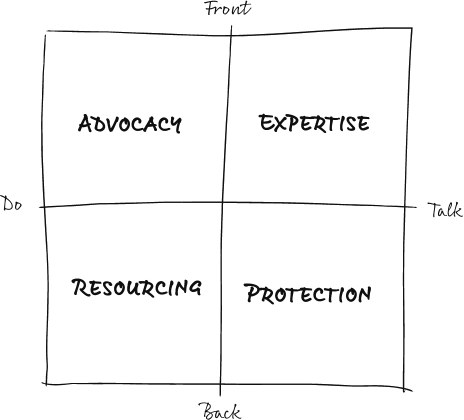The greatest glory of leading lies not in never falling, but in rising every time you fall.
Nelson Mandela, civil rights leader
At an organisational level, it’s critical to have a support structure in place to empower and facilitate the implementation of great projects. This means helping the people and the teams who are doing the important work by having their front, having their back, and assisting them with the doing (walking the walk) and the conversations (talking the talk).
Once again our support model (figure 18.1) is broken up into doing and talking, and front and back. The four elements of the model at an organisational level are expertise, protection, resourcing and advocacy.
Figure 18.1: organisation support model

Expertise
The expertise quadrant is about providing advice and know-how that drives results. By its very nature, implementing great, innovative, exciting projects means doing things that are new, unfamiliar and unknown. One of the most powerful support structures to enable this is the provision of expertise (see figure 18.1).
Expertise can come in the form of an internal mentor — someone within the organisation who knows the terrain a bit better, or has experience within the domain. Equally, expertise could come from external advice. This requires the organisation to be willing to recognise that the project is outside its current capability, ...

